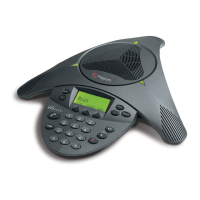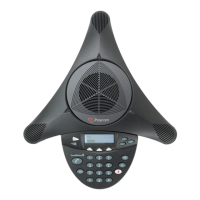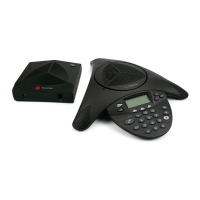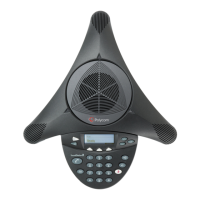THE "BRAIN" MODEL OF INTELLIGIBILITY IN BUSINESS TELEPHONY
Polycom, Inc. Page 5 of 8
Amplitude refers to how loud the talker sounds to the listener. A quiet talker is more
difficult to understand than a loud one, all things being equal, and a listener who is distant
from the loudspeaker will have a harder time than when he is closer to it. The telephone
network can compound this situation because telephone lines can have very different
gains, varying in loudness by up to 20 dB (100 times) from connection to connection.
Interaction is the ability of two or more participants to naturally interact with each other in
a telephone conference. It is essential that one talker be able to interrupt another without
disturbing the flow of conversation, or the dialogue is stilted and unnatural. The thread of
meaning is lost as the participants are diverted into the kind of "what?" "you go ahead,"
"no, you go ahead" exchange so often heard with mediocre speakerphones.
Noise refers to the proportion of ambient noise that is picked up along with speech. Room
noise, such as air conditioning and projector fan noise, can be easily heard by
microphones, and it plays a significant role in decreasing the intelligibility of speech. This
has become a more significant issue in recent years, as LCD projectors (which often have
small, noisy fans) have appeared on conference tables adjacent to conference room audio
system microphones.
What is interesting about these five BRAIN elements is that they work together in creating
intelligible speech and identifiable speakers. Research has shown that, to a surprising
degree, each of these five parameters can compensate for deficiencies in another. An
excess of noise, for example, which is accidentally picked up and added to a talker, will
make the speech more difficult to understand, but can be compensated by increasing the
bandwidth of the whole signal. High room reverberation, which makes the signal muddy
and difficult to understand, can be compensated by increasing the bandwidth of the signal,
the loudness, or both. Deficient loudness, perhaps caused by a talker who is too far from
the microphone, can be compensated by reducing the amount of noise, increasing
bandwidth, or reducing reverberation.
Methods for BRAIN Optimization
This interaction is fortunate, because it means that many problems that cannot be directly
solved (making a room less reverberant, for example, may involve significant expense) can
be assisted by improving parameters which are more accessable. They may not affect the
issue directly (increasing bandwidth will not decrease room reverberation, in this
example), but they can help achieve the desired result (it will make the talker more easily
understood).
Let us examine today's toolbox to understand what options we have in making meetings
more efficient and enjoyable. As before, we will examine these in the context of the
BRAIN model to understand what can go wrong, and what can be done about it.

